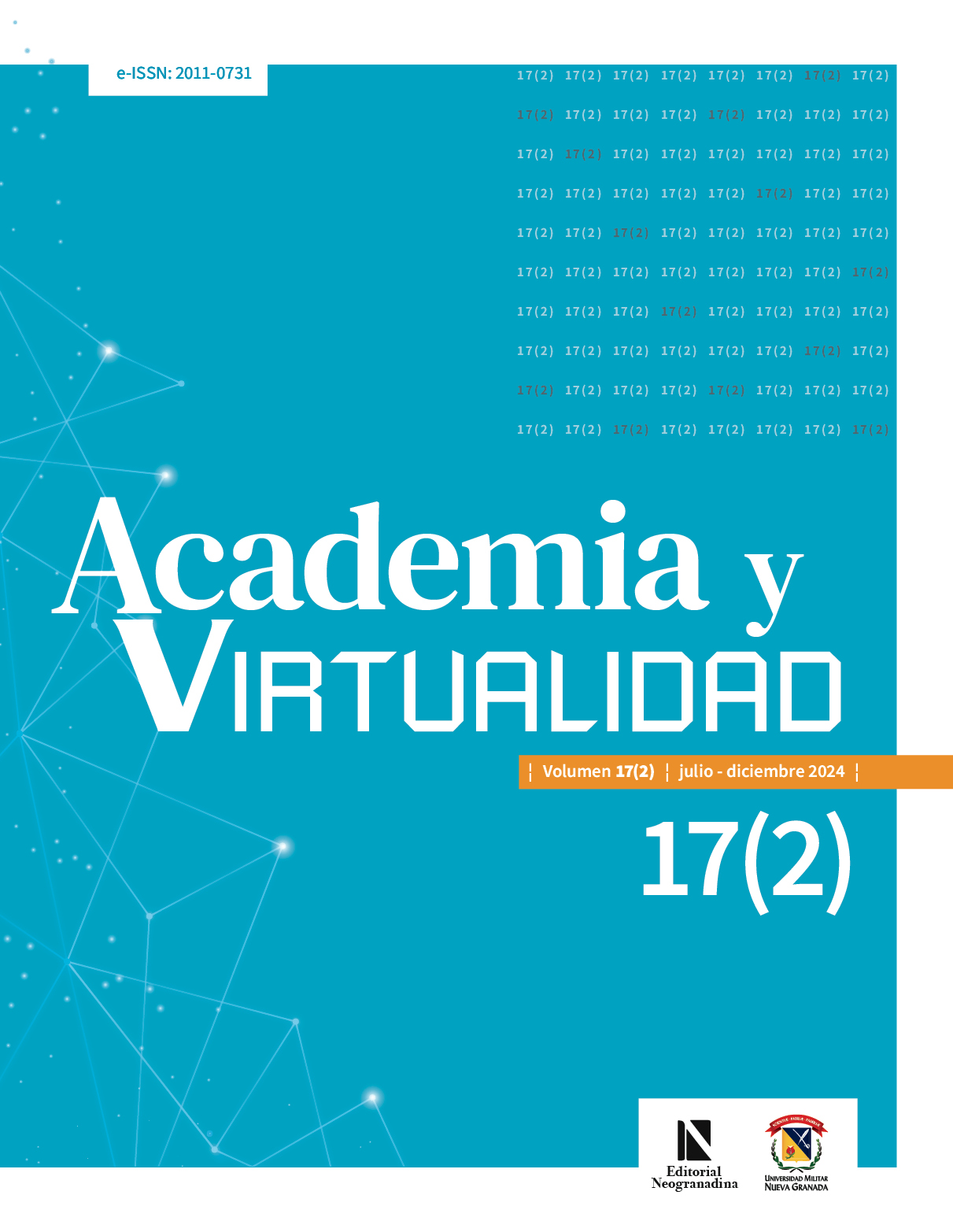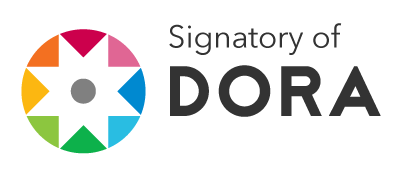Designing an Educational Application for Colombian Spanish Learning: A Communicative and Sociocultural Approach
Abstract
The research has the aim to demonstrate the process of design of an educative application to develop the Colombian Spanish learning process as a foreign language to A1 students. It has the purpose of strengthen the communicative competence from different perspectives such as grammar, lexical, pragmatic, and cultural level. The development plan structured by the research was carried out regarding at a qualitative and quantitative analysis through investigation, data collection and techno-pedagogical references that contributed to the design of the application. The findings found that the relevance of the didactic resources and usage of software applications Framework Ionic and JavaScript language. The design of the application permits a more effective interaction from the development of different language components using a mediation tool such as the technology. The findings demonstrate the importance of digital resources, interaction, use of sociolinguistic and pragmatic contents in authentic and real contexts of the Spanish language.
Downloads
References
Bachman, L. F. (1990). Fundamental Considerations in Language Testing. Oxford University Press.
Bachman, L. F. (1995). Fundamental Considerations in Language Testing: Updates and Implications. Oxford University
Press.
Bradley, L., Berbyuk, N y Hasemi, S. (2017). Integration and Language Learning of Newly arrived Migrants Using Mobile Technology. Journal of Interactive Media in Education, 1(3), 1-9. https://doi.org/10.5334/jime.434
Cabero, J., Fernández, B. y Marín, V. (2017). Dispositivos móviles y realidad aumentada en el aprendizaje del alumnado universitario. RIED. Revista Iberoamericana de Educación a Distancia, 20 (2), 167-185. https://doi.org/10.5944/ried.20.2.17245
Celce-Murcia, M. (1990). Grammar in Context. Cambridge University Press.
Elaish, M. M., Shuib, L., Ghani, N. A., Yadegaridehkordi, E. y Alaa, M. (2017). Mobile learning for English language acquisition: Taxonomy, challenges, and recommendations. IEEE Access, 5, 19033-19047.
Elizondo, A. I. R., Bernal, J. A. H. y Montoya, M. S. R. (2010). Desarrollo de habilidades cognitivas con aprendizaje móvil:
un estudio de casos. Comunicar: Revista científica iberoamericana de comunicación y educación, (34), 201-209.
Ellis, R. (1994). The study of second language acquisition. Oxford University.
Fernández, S. (2009). Interlengua y aprendizaje/adquisición del español. Revista Nebrija de Lingüística Aplicada a la enseñanza de Lenguas, (5), 50-54.
Fernández, C. (2013). Técnicas de enseñanza basadas en input para la adquisición de la gramática en la sala de clase. Revista Nebrija de Lingüística Aplicada, 13(1).
Gass, S. M. y Madden, C. G. (Eds.). (1985). Input in second language acquisition. Newbury House.
García, S. y Lujan, C. (2016). Ubiquitous knowledge and experiences to foster EFL learning affordances. Computer Assisted Language Learning, 29(7), 1169-1180.
Gutiérrez, S. (2004). La subcompetencias pragmática. En Sánchez Lobato (dir.), Vademécum para la formación de profesores: Enseñar español como segunda lengua L2/ lengua extranjera LE, Tomo I, 179-198. SGEL.
Hernández-Méndez, E., Chi-Canul, H. y Ortiz-Martínez, A. (2021). ¿Cuál es el input lingüístico al que se exponen los aprendices de inglés como lengua extranjera? Un estudio comparativo en el contexto mexicano. Colombian Applied Linguistics Journal, 23(1), 78-93.
Instituto Nacional de Tecnologías Educativas y de Formación del Profesorado [INTEF]. (2017). Marco Común de Competencia Digital Docente. Ministerio de Educación, Cultura y Deporte (Gobierno de España). https://eduteka.icesi.edu.co/pdfdir/intefcompetenciadigital-docente-2017.pdf
Hymes, D. (1972). On communicative competence. Sociolinguistics, 269293, 269-293.
Instituto Cervantes. (2006). Plan Curricular del Instituto Cervantes. Niveles de referencia para el español. Instituto Cervantes; Biblioteca Nueva. http://cvc.cervantes.es/ensenanza/biblioteca_ele/plan_curricular/
Krashen, S. D. (1985). The input hypothesis: issues and implications. Longman.
Klímová, B. (2018). Mobile phones and/or smartphones and their apps for teaching English as a foreign language. Education and Information Technologies, 23(3), 1091-1099. https://doi.org/10.1007/s10639-017-9655-5.
Llerena, E., Padilla, C. D. y Altamiranda, J. D. (2012). Software educativo con un enfoque dialectal para el aprendizaje del castellano como lengua extranjera. Interpretextos, (8), 155-174.
Martín, J. M. (2000). La lengua materna en el aprendizaje de una segunda lengua. Editorial Universidad de Sevilla. Morollón, N. (2017). El potencial pedagógico de la pragmática sociocultural como herramienta de mediación en la interpretación de experiencias interculturales. Pragmática Sociocultural/Sociocultural Pragmatics, 5(1), 59-86.
Orgaz, C. R. (2018). Un análisis de aplicaciones móviles para el aprendizaje autónomo de ELE. Revista Electrónica del Lenguaje, 9.
Regueiro, M. (2014). La programación didáctica en ELE. Arcos Libros.
Ruipérez, G. (2016). La enseñanza de lenguas asistida por ordenador (ELAO). En Sánchez Lobato (dir.), Vademécum para la formación de profesores: Enseñar español como segunda lengua L2 / lengua extranjera LE, Tomo II. SGEL.
Salaberry, M. R. (2001). The use of technology for second language learning and teaching: A retrospective. The modern language journal, 85(1), 39-56.
Trujillo, F., Salvadores, C. y Gabarrón, Á. (2018). Tecnología para la enseñanza y el aprendizaje de lenguas extranjeras: revisión de la literatura. RIED, Revista Iberoamericana de Educación a Distancia, 21(2), 153-169.
Schmidt, R. W. (1990). The role of consciousness in second language learning. Applied Linguistics, 11(2), 129-158. Schumann, J. H. (1986). Research on the acculturation model for second language acquisition. Journal of Multilingual & Multicultural Development, 7(5), 379-392.
Thomas, J. (1983). Cross-cultural pragmatic failure. Applied linguistics, 4(2), 91-112.
VanPatten, B. y Oikkenon, S. (1996). Explanation versus structured input in processing instruction. Studies in Second Language Acquisition, 18(4), 495-510.
VanPatten, B. (2004). Processing instruction: Theory, research, and commentary. Routledge.
Yanquén, C. A. y Otálora, J. E. (2016). Medición de la usabilidad en el desarrollo de aplicaciones educativas móviles. Revista Virtual Universidad Católica del Norte, 47, 128-140. http://revistavirtual.ucn.edu.co/index.php/RevistaUCN/article/view/746/1272
Funding data
Copyright (c) 2024 Academia y Virtualidad

This work is licensed under a Creative Commons Attribution-NonCommercial-NoDerivatives 4.0 International License.











